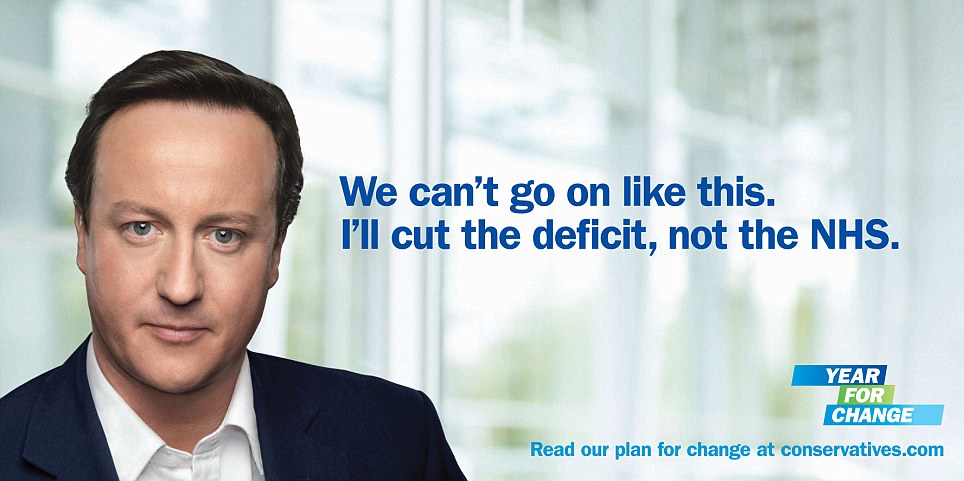- Conservative election poster 2010
An analysis published at Socialist Economic Bulletin confirms that the Liberal-Democrat coalition government – the ConDem’s – brutal attack on the National Health Service is indeed a brutal attack. Some highlights:
To take the current FY, spending is set to rise by 2.0% compared to the spending in FY 2010/11, even though RPI inflation is currently running at 5.5%. In fact, the total level of spending on the same measure under the last Labour government in the FY 2009/10 was £103bn (Treasury, Budget 2010, Table 2.2, p.43). By the end of the current FY this government will have been in office for just under two years. Over that time spending on the NHS will have risen from £103bn to just £105.9bn, or 2.8%. According to the Office of Budget Responsibility, RPI inflation will have risen by a cumulative 10% over the same period (OBR, Economic and Fiscal Outlook, March 2011, Table 4.3, p.95). This represents a decline in real spending of 7.2% in just two years.
This continues so that over five years nominal NHS spending is projected to rise from £103bn to £114.4bn, or fractionally over 11%. At the same time, the OBR projects that inflation will have risen by 22%, representing a real decline of 11%.
According to the OECD health spending tends to increase internationally by around 1.5% per year over the long run, because of growing and ageing populations as well as the higher inflation rate of medical processes. If that long-run international pattern applies to Britain overt the 5-year period, the additional real spending required would increase by 7.7%.
The Tory-led cuts to the NHS are therefore nearly 19% in real terms compared to normal trends over the lifetime of this Parliament.
…
Much more than the real cuts in spending, which are not fully appreciated, the government has drawn fire for its plans to restructure the health service. It is intended that the Primary Care Trusts (PCTs) will be abolished and replaced with consortia of GPs to commission medical services, with much talk of local devolution of decision-making. As elsewhere the reactionary utopia of patients (or students) becoming ‘customers’ who choose their service-provider gives way to the reality that it is the professional entity which does the choosing (GPs, school governors, etc).
PCTs themselves are a New Labour half-way house, designed to continually introduce private sector providers among the rosters of legitimate ‘NHS’ service providers – indeed they were obliged to do so. But this piecemeal privatisation of health services- while maintaining the NHS brand – is insufficient for the Tory-led government. It intends a wholesale transfer of provision to the private sector, and a variety of mechanisms may be deployed.
These include insisting the GP consortia allocate to the lowest bidder, or rewarding them financially for doing so. The option of removing the NHS from British and EU competition law is also considered, which allows ‘social providers’ to be excluded from lowest-bidder regulations. Any of these would have the effect of allowing the private sector firms to provide services in only the most routine and simple procedures- but remove the equivalent funds from the NHS which would increasingly struggle to cope with more complex, difficult procedures or chronic conditions. The costs of the public sector would rise and be increasingly unable to cope against a backdrop of continuous and deep real cuts. The private sector could increasingly win a greater proportion of formerly NHS provision, leaving it to wither.
